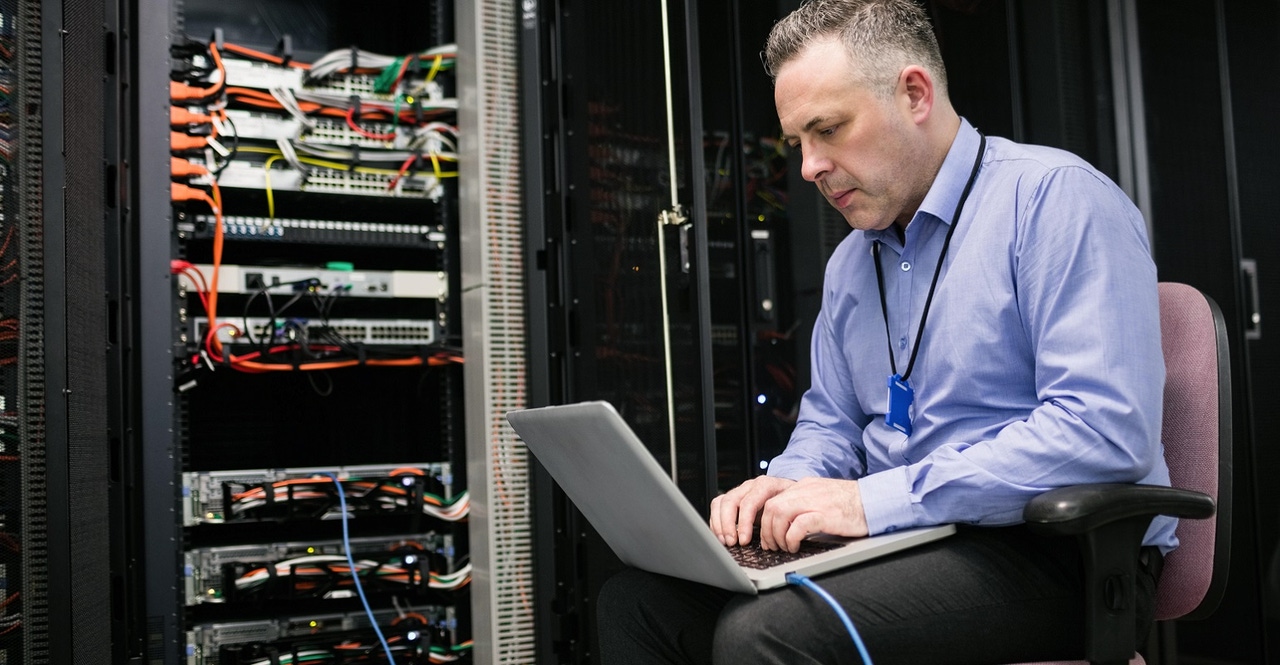Server Rooms vs. Data Centers: Advantages and DisadvantagesServer Rooms vs. Data Centers: Advantages and Disadvantages
Despite the benefits of data centers, using a server room to operate IT equipment can sometimes be the better choice. These pros and cons of both server rooms and data centers will help you make the right decision.

If cost and sustainability were not factors, every business would operate a standalone data center — meaning a detached facility purpose-built for housing servers.
But in the real world, many businesses that need to operate IT infrastructure can't justify the investment for building a full-fledged data center. So they do the next best thing: They set up server rooms inside multi-purpose buildings.
Now, it would be easy to treat on-site server rooms as an outdated or risky way to operate IT equipment. But there's no shame in relying on an old-fashioned server room. In fact, for some businesses, it may be a better approach than building a traditional data center or paying for colocation space.
With that reality in mind, let's talk about the pros and cons of server rooms compared with conventional data centers, and when to choose which.
What Is a Server Room?
When I refer to server rooms, I mean rooms that are filled with servers but that are not part of a conventional data center. You find server rooms inside facilities built primarily for other purposes — most often, office buildings where staff of all types work.
Server rooms don't require special equipment apart from cooling systems (which, in many cases, is the standard air conditioning system installed in whichever building houses the server room) and enough electricity to power however many servers will live in the room.
Once upon a time — before the cloud came along and offered an easy, low-commitment means of deploying infrastructure — server rooms were pretty common at businesses that needed to host any type of data or software. Indeed, my first sysadmin job, which I started in 2008, involved managing a set of servers housed in a literal closet next to a receptionist's desk. Later, the organization upgraded to a larger space in the basement, which was advantageous mainly because it was cooler and more physically secure, thanks to an iron cage that we installed around the servers.
I'm told that the organization's IT environments have since migrated to the cloud, but when I left a decade ago, things were still running out of the basement server room.
Differences Between Server Rooms and Data Centers
Although server rooms and data centers support the same core need — providing a space for deploying IT equipment — they are different in several key ways:
Size: Server rooms are typically quite small and capable of accommodating a few dozen servers at most. In contrast, a single data center can often support many thousands of servers.
HVAC systems: Whereas server rooms rely on conventional HVAC systems to remove excess heat, data centers may have advanced cooling systems, such as immersion cooling, that are more efficient and effective than standard HVAC.
Physical security: Data centers are usually more secure against physical security threats because they offer multiple layers of defense — a secure facility perimeter, card-controlled or biometric authentication for entry points and, in the most robust facilities, physical security controls for individual server cabinets. In contrast, most server rooms are protected only by a locked door.
Energy efficiency: Data centers are more likely to benefit from renewable energy sources and other sustainability practices. It's less common for server rooms to be designed with sustainability in mind because they exist inside larger buildings that are not optimized for sustainable IT use cases.
When to Choose a Server Room vs. a Data Center
On the whole, then, data centers are more sophisticated in most respects. They are more secure, more energy-efficient, and more reliable than an on-site server room.
But that doesn't mean data centers are always the best choice for housing IT equipment. A basic server room may make more sense if the following are true for your business:
You have a relatively small number of servers and don't require the massive square footage of a data center.
You want your infrastructure to be as close as possible to your employees (which is advantageous both from a network latency perspective and because equipment is easy for your team to access). You can't really get any closer than a server room located in the same building where your workforce works.
You have a small budget and can't afford your own data center or the cost of colocation.
For more complex or larger-scale server needs, a dedicated data center, or the use of a colocation facility, is typically the way to go. But there's no shame in settling for an old-fashioned server room if it meets the IT needs of your business.
Conclusion
Conversations about data centers tend to focus on large, standalone facilities with advanced energy, HVAC, and security systems. But the reality is that many "data centers" take a much simpler form: They are mere rooms filled with servers inside an office building. And there's nothing wrong with that if it works for your business.
About the Author
You May Also Like









